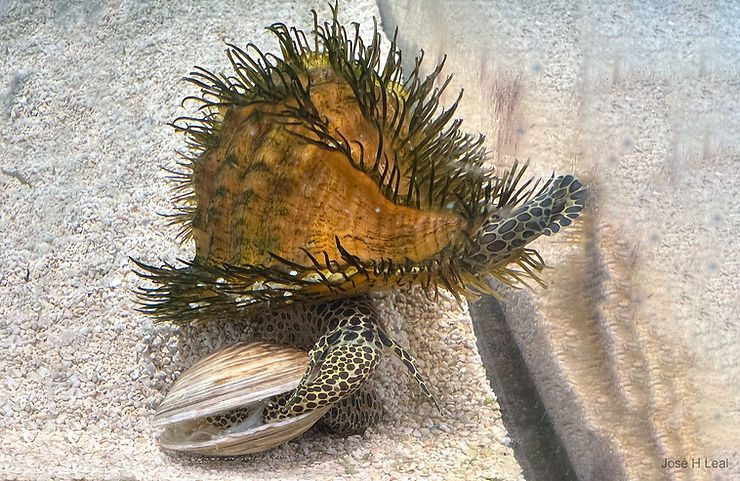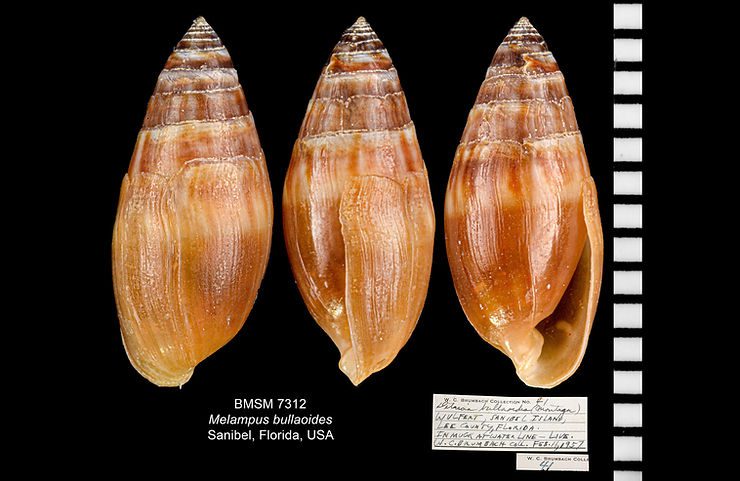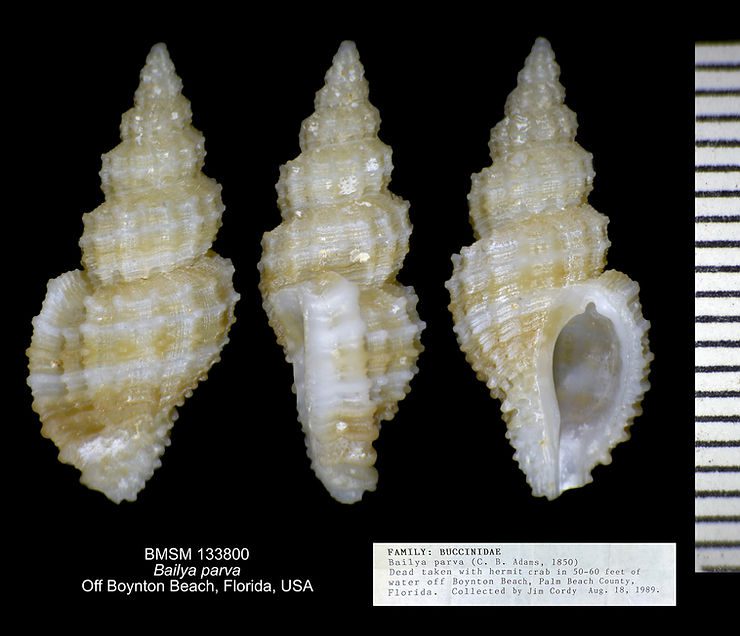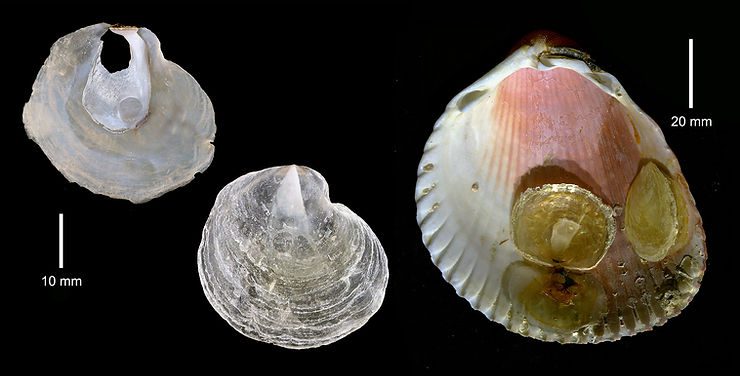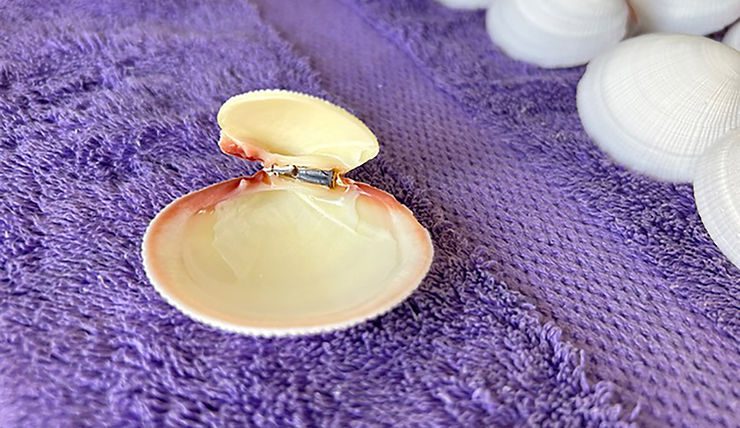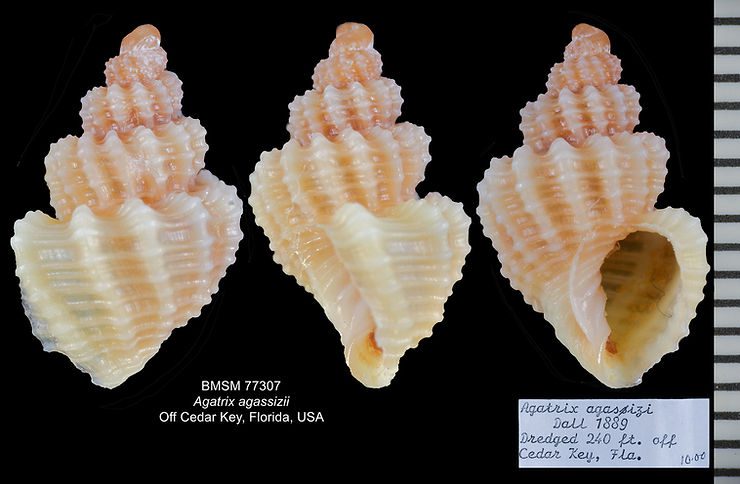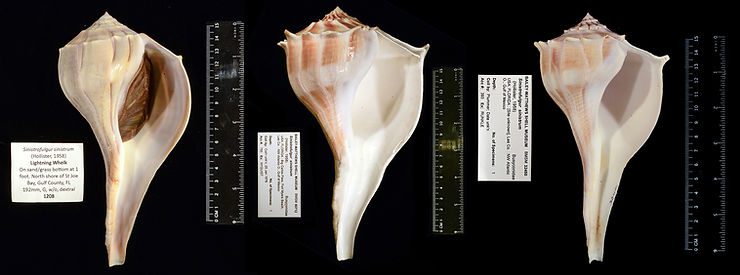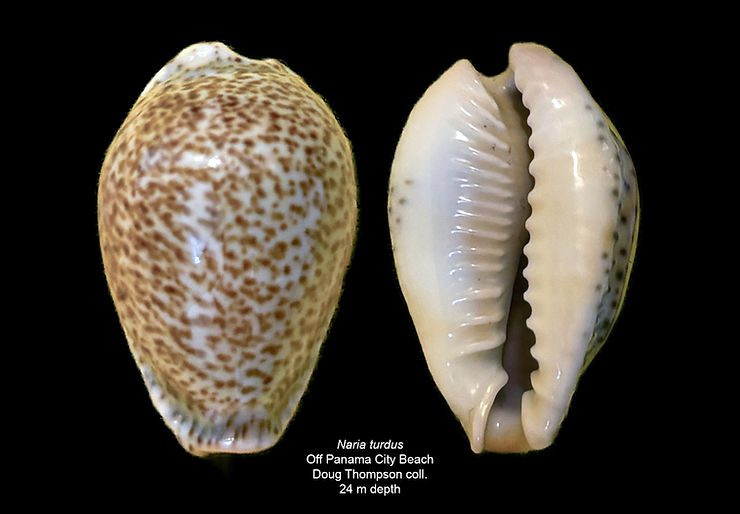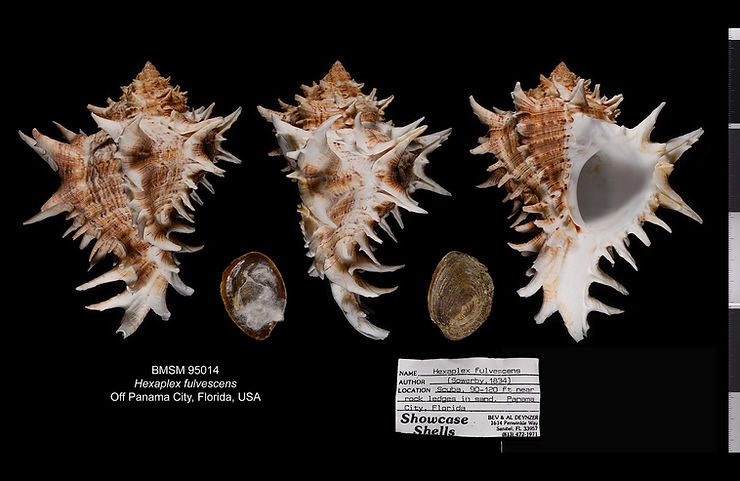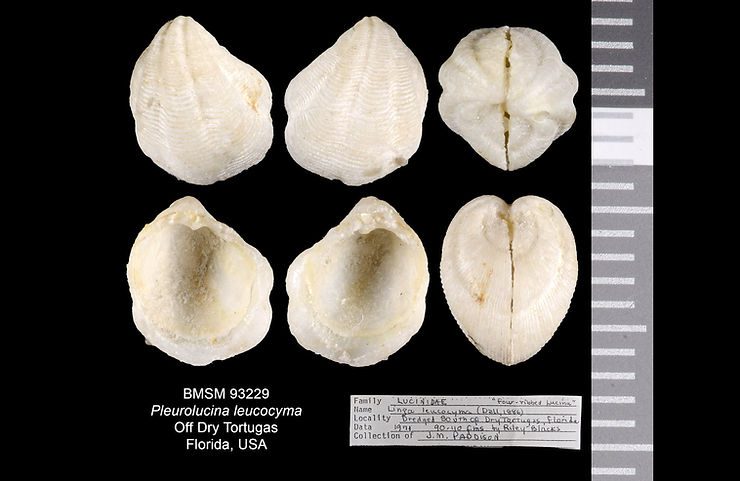
Shell of the Week: The Four-ribbed Lucine
Pleurolucina leucocyma reaches 7 mm (about 0.28 inch) in length. Its shell is unusually shaped (like a "warped triangle”) and bears 3 or 4 thick radial ribs crossed by fine commarginal (“concentric”) lines. The color is cream to off-white. The species is found off North Carolina, both coasts of Florida, Gulf of Mexico, and the Bahamas. #pleurolucinaleucocyma #lucinidae #drytortugas #lucinaleucocyma
